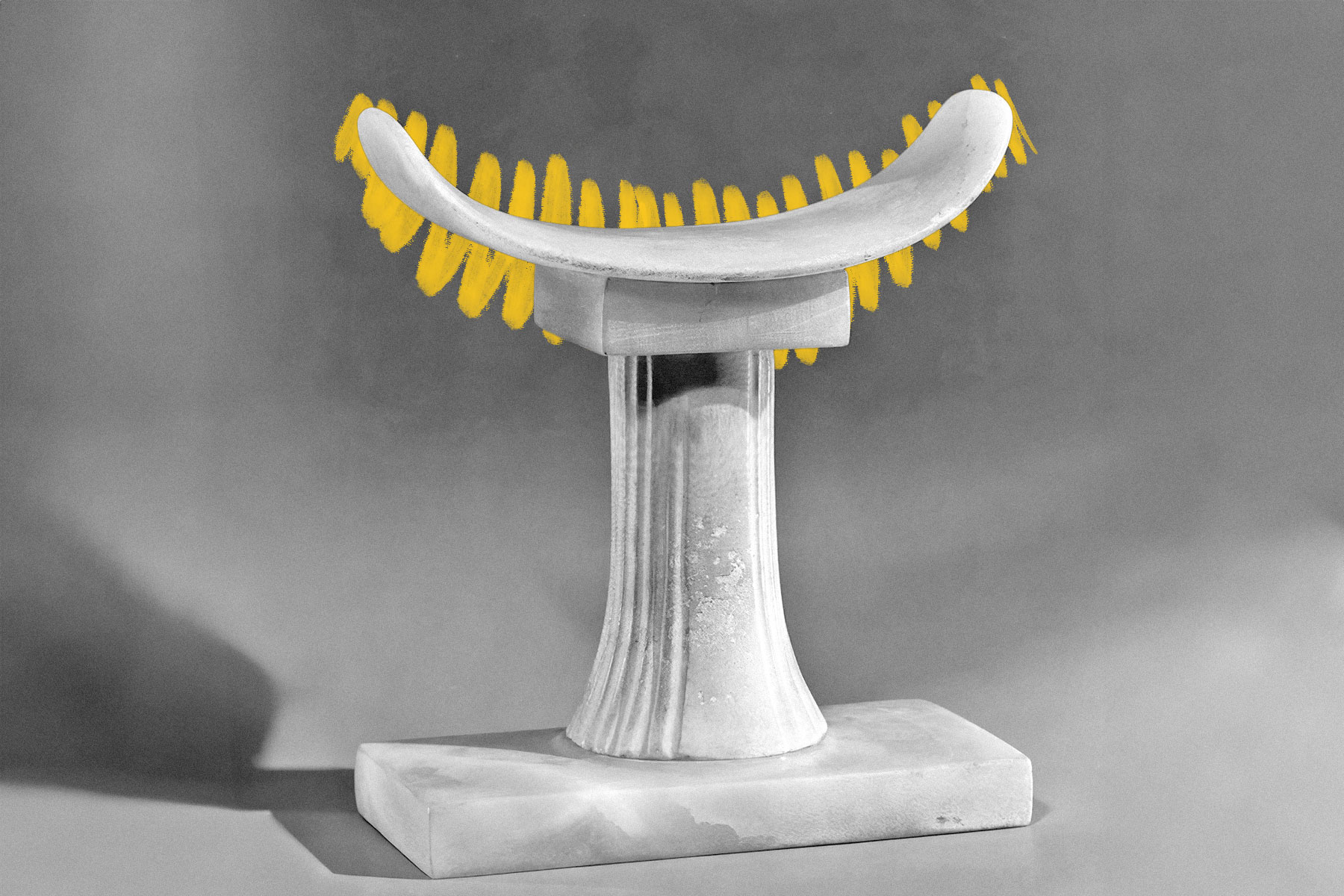Ancient people slept on pillows made of stone.
Choosing a pillow in the 21st century is no simple task. The options can seem overwhelming. Memory foam, down, feathers — the list goes on. There are even customized pillows that sell for around $5,000. But long before humans had their pick of soft, comfortable pillows, many ancient cultures developed early versions that barely resemble the cushy supports we use today.
The earliest pillows can be traced to Mesopotamia — the region known as the “cradle of civilization,” centered in modern-day Iraq — around 7000 BCE. These curved stone bolsters served a practical purpose: keeping bugs and vermin out of the mouths, eyes, and noses of the wealthy. Ancient Egyptians improved on the formula some 5,000 years later with the elevated headrest. Made of wood or stone, the Egyptian headrest consisted of a base and stem attached to a cradle to raise the user’s head. Most Egyptian headrests consisted of a flat, rectangular base with a straight shaft and curved neckpiece, and the user’s head was meant to mimic the sun rising in the horizon. The Egyptians also added a spiritual element to pillow use, often placing them in the tombs of the deceased; Pharaoh Tutankhamun was laid to rest with no fewer than eight ancient pillows in his tomb. Ancient Egyptians believed that protecting the head was essential even in the afterlife. Headrests were also thought to dispel demons, and many were adorned with images of Egyptian gods such as Bes and Taweret, believed to banish evil from the dark night in both life and death.







